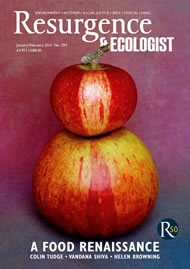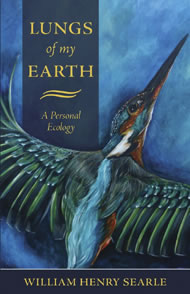One mile south from my home in the New Forest National Park stands a beech tree, Fagus sylvatica. To reach it I walk directly south along a mud, sand and white-flint track that takes me through ankle-high heather, past lone silver birches whose showers of leaves tenderly clash in the wind, and into Studley Wood. Two moss- and lichen-smothered timbers are poised on either side of the path like remnants of a noble gateway. Definitions of the path disappear beneath thickly overlain carpets of leaves and twigs. It is here that I remove my boots, tie them together by the laces and drape them over my shoulders. As it’s early September, with the sun entering the wood in pulses and waves of mid-morning light, the ferns are head-high, and of a jade-green so bright as to be almost translucent.
The beech tree comes into view like a home. When I first found it I was stunned, not only by its elegant shape, the curving reaches of its branches, its leaves, but also by its spaciousness. Not merely the space it took up within the wood, pushing the oaks and the ash away from its centre, but also the space it gave, beneath the nave of its branches, the column of its trunk twisting ever so slightly towards the sky, the profuse measure of its crown, to the surrounding woodland. Under its vast shelter I experienced the sensation of looking out to sea from a headland. The immensity of things. The openness of the universe. And the tree was my invitation to step through the open door into a space in which the divide between myself and the wood dissolved. Everything glimmered.
I return to the beech tree most days, not to try to relive that first experience, but to allow the tree to become an essential part of my life, to steadily inform my habit of being. Placing my boots to one side, I sit upon the ground and admire the tree, slowing my breathing to the pace of the wood, quietening myself, loosening my awareness, listening, vigilant. Somehow, through the beech tree’s influence, I grow into another, fuller and more real mode of being. In that shift in consciousness, the tree vivifies into a presence as commanding of my attention as a loved one. It is then that I know that the tree is sacred, not only through the intricacies of its biological functioning, the interconnected role it plays in the wood as provider of life to sky and soil, but also through its nameless being, the light it is unto itself. I address it in reverential silence, an attitude elicited naturally from the tree itself, an attitude continuous with the exhalation of oxygen from its leaves, the rhythmic movement of water into its roots. Sometimes I am moved to tears, sometimes I am made breathless, and on occasion I am overcome by a joy so profound that it seems my life was destined for this wordless moment of awe. Each time, I walk home changed, though I often cannot say how. I put off for later reading the newspapers, staring blankly and blear-eyed at figures of ecological disaster, statistics that no matter how harrowingly huge will never instigate change, policies too daunting to bear, too confusing to implement. For a while something essential is revived. The beech tree stands bright, breathing and tall.
Resacralising the Earth is as fundamental as rewilding in our present time in realigning a culture gone awry, and in restoring to the Earth a sanctified glory that has been monumentally trampled. The sacred demands a seismic shift in our orientation towards the natural world, a powerful unsettling of our calcified psychology of the human-centred worldview. This shift could bring about a new epoch. The sacred is there before our very eyes. It is not an object to be bagged, but a process to be lived through. We breathe it and live it. But because of the pressures on us to fit in with the machine of consumerism, it remains in our blind spot. The sacred is about waking up. It is about rediscovering the body of light that we are and allowing ourselves to be sensitively gathered into the earthly moment, staying there in a numinous, sensuous region, of which attempts to weigh, calculate, dominate are both futile and unnecessary. And such a place, in which we feel ourselves integral to the Earth, is not reached through any arcane, esoteric method: it is plunged into through the gift of sentience. We find ourselves brimming over with awe at simply being alive in a living, breathing, singing world. In that place of shimmering contact, considerations of mutating any part of that living world into something other than it is are both unimaginable and unwarranted. In living the sacred, we want nothing more than that the natural world should flourish.







